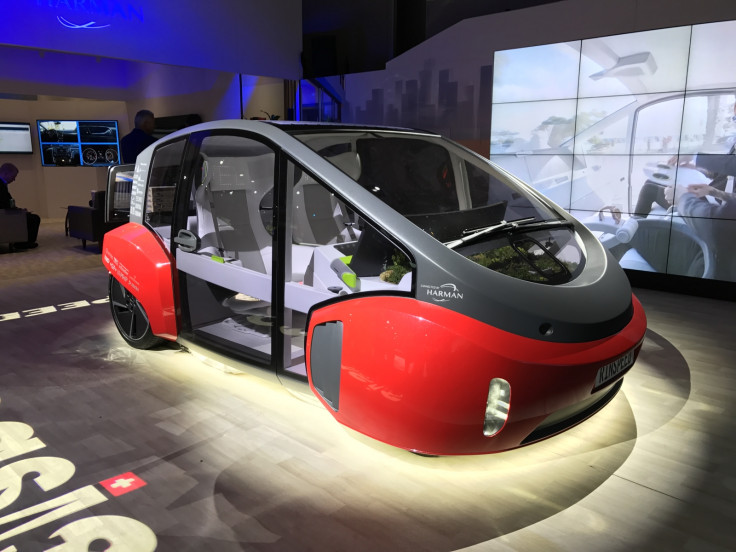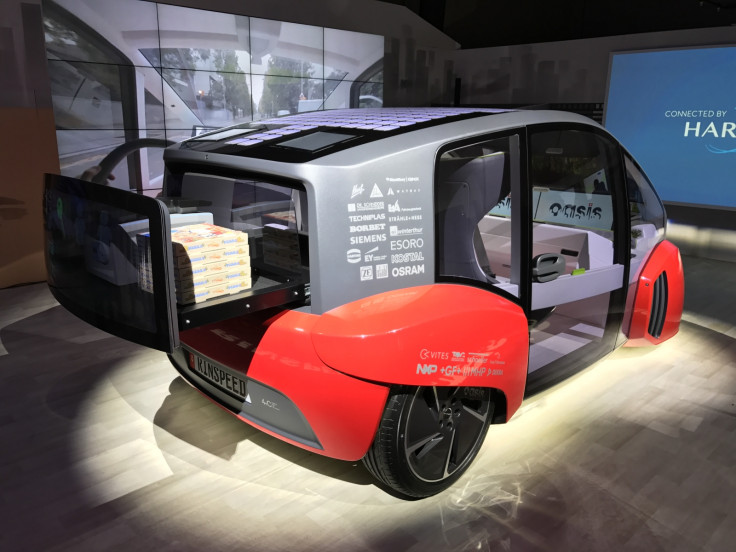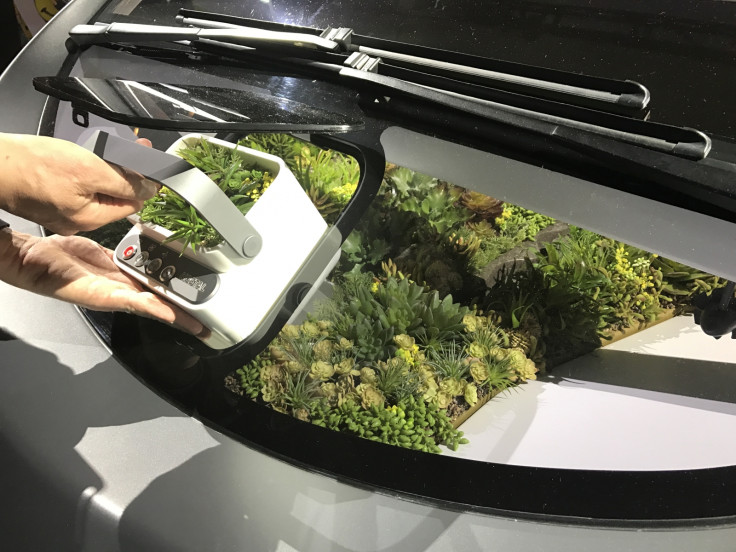Breathe easy, this self-driving concept car has its own mobile garden
Rinspeed Oasis concept car is unveiled by Harman at the CES 2017 technology show in Las Vegas.

What has a small garden at the front, Facebook in the middle and pizza at the back? The Rinspeed Oasis, a concept car built to offer a glimpse of what the future of transportation could look like.
Built in partnership with connected car and audio company Harman, the Oasis stopped off at the CES technology show in Las Vegas, before heading to the Detroit motor show this week. IBTimes UK was on hand in Vegas to have a closer look.
Following on from last year's BMW i8-based Etos concept car, the Oasis is designed to show us what driving (or being driven, in the majority of cases) will look like in the coming decades. This means enormous glass doors, silent electric power, a steering wheel which retracts when it isn't needed, solar panels on the roof... and a garden on the dashboard.
Created by Rinspeed and electronics company Kostal, the garden is filled with sensors to activate a watering system, switch lights on when the car is parked in a dark garage, and alert the owner via a smartphone app when more nutrients are required. "As a natural climate control system they exert a positive influence on humidity, create oxygen and filter out dust and other harmful substances from the air we breathe," Kostal says.
This would not be a Rinspeed concept without a couple of wacky features, so alongside the mini garden the Oasis also has a slide-out boot for storing takeaway pizza boxes, a luxury watch strapped to the steering column and an augmented reality display projected across the windscreen.

Beyond the frivolous futurism laid on far too thick, the Oasis gives say some interesting clues about how car makers and technology companies are planning to orchestrate the transition between human and computer driving. Primarily meant as an autonomous ride-sharing vehicle (a self-driving taxi), the Oasis can be driven at will by a passenger in the driver's seat, but only if the car knows they are paying attention.
To do this (in theory, this is just a concept remember), the car uses a camera and eye tracking technology to monitor the driver's gaze and alertness. The car will not allow the driver to take over if it thinks they are distracted, and once they are in control it won't let them take a phone call if they appear distracted by traffic or other external factors.

With a nod towards the future of "vehicle to vehicle" and "vehicle to infrastructure" networks, Harman proposes how the Oasis concept could detect nearby cyclists hidden around corners or behind other vehicles, so long as riders wear compatible sensors.
Recognising the growing popularity of artificial intelligence and personal assistant like Apple's Siri and Amazon's Alexa, Harmon and Rinspeed have fitted the Oasis with an assistant of its own. The car will point out places of interest which are relevant to you as you go past them, such as restaurants recently recommended by friends on the passenger's various social media accounts.

Taking social media on the road is also a key theme of the Oasis. Each front seat passenger gets their own widescreen display to check Facebook and Twitter, or watch TV. The overarching theme here is how a customer can hail the car (with a smartphone app, not a wave of their hand), then step inside and log in. From there the car will know them, their personality and preferences based on their social media activity.
Although some aspects of the Oasis will likely never make it to mass production, the concept of an autonomous vehicle hailed and shared by multiple passengers is a hot topic in Silicon Valley and at car company headquarters the world over. BMW and Ford are both working on a future where their customers commute in self-driving vehicles, then enjoy driving a car of their own on weekends. "Mobility as a service" is the overarching phrase used to sum up these plans, which Google, Uber and others are also fighting to be a part of.
© Copyright IBTimes 2025. All rights reserved.






















